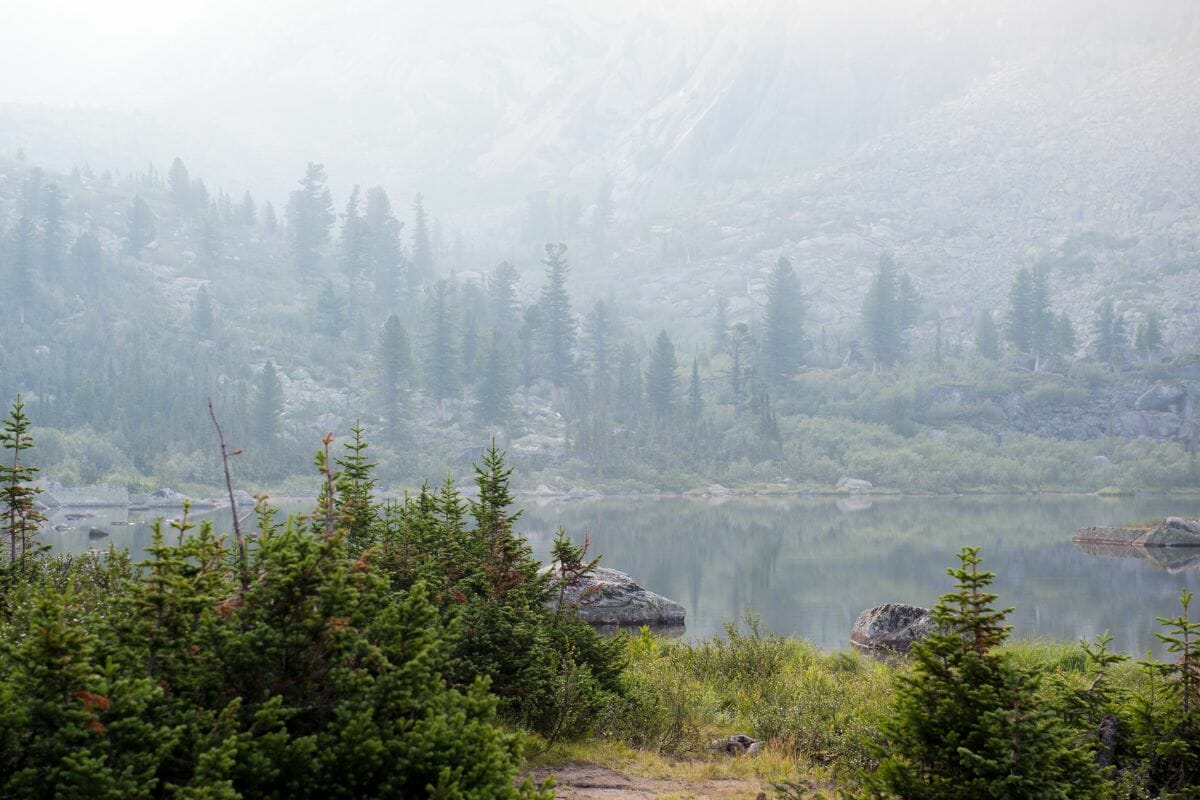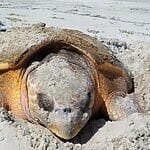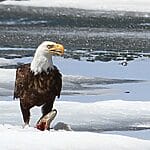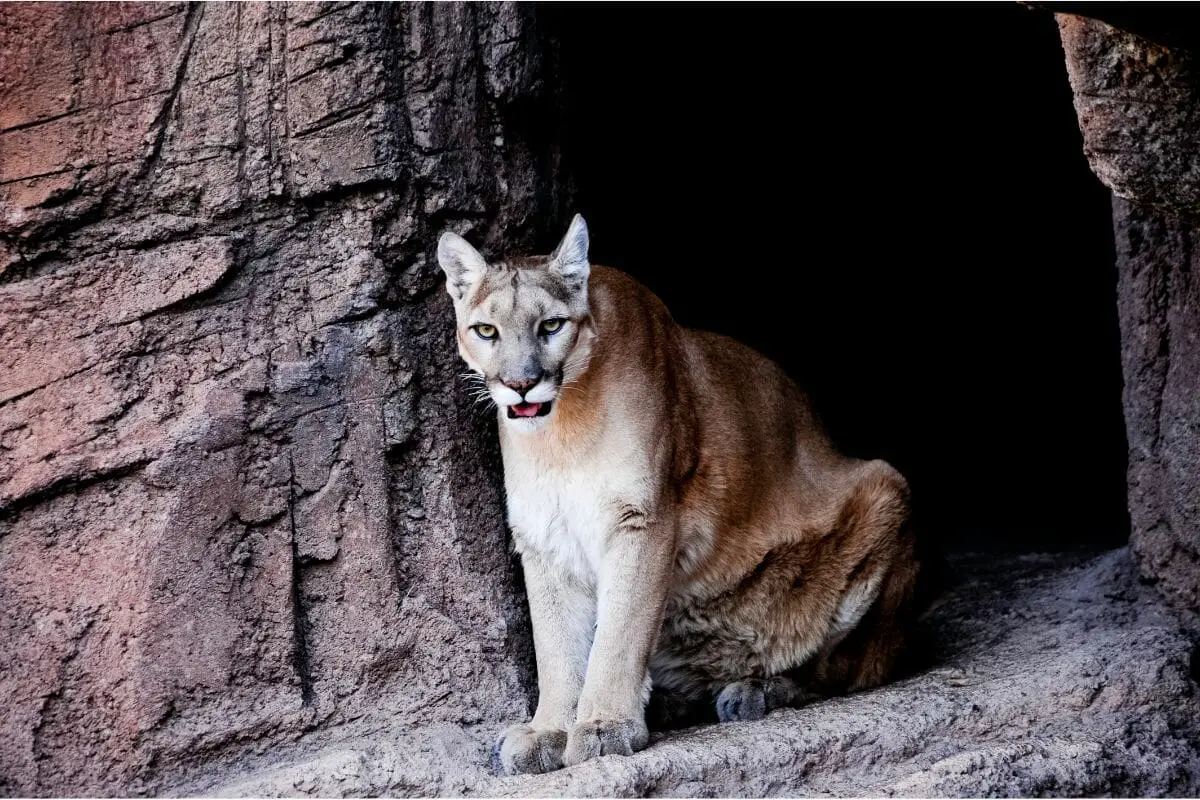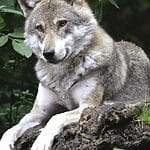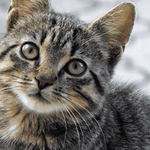12 Interesting Animals in the Boreal Forest – You Might Not Know
The taiga, also known as the boreal forest, stands as one of Earth’s largest biome, encircling the high latitudes of the Northern Hemisphere like a vast green belt.
The boreal region is rich in vegetation and characterized by extensive coniferous forests, spruce, pine, fir, and coniferous trees. The taiga spans continents, covering regions in North America, Europe, and Asia.
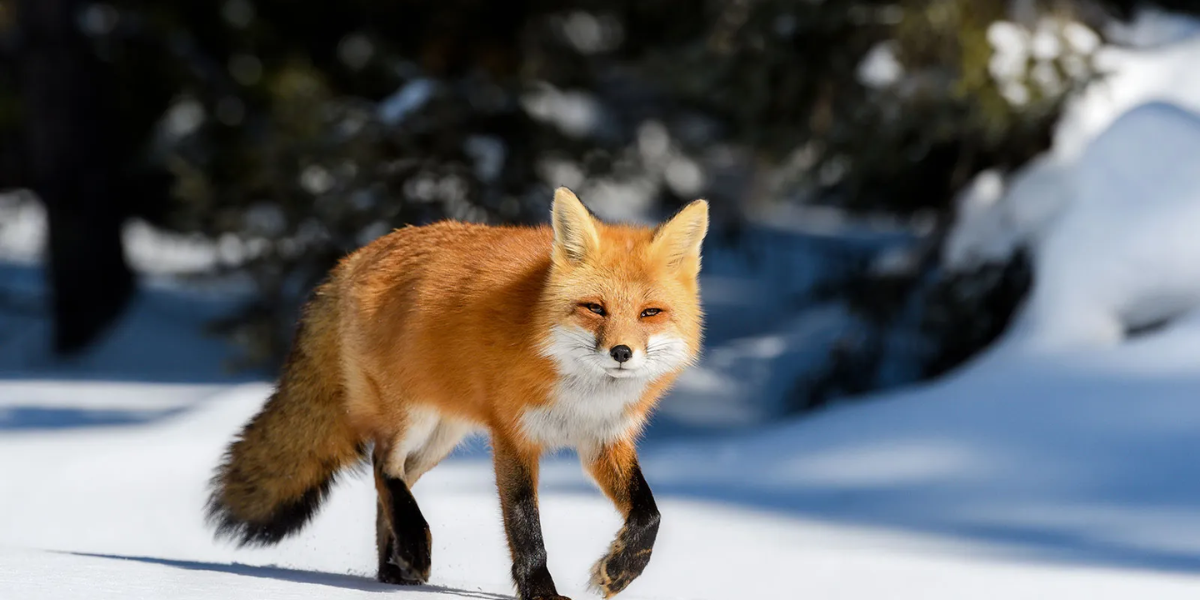
Roaming beneath the towering canopies, visitors may encounter interesting animals such as the elusive lynx, agile moose, and the clever red fox. The boreal forest is also home to formidable predators like wolves and bears, contributing to the intricate balance of this northern ecosystem.
This biome is shaped by extreme climates, experiencing long, harsh winters and short, yet vibrant, summers. The taiga harbors a rich variety of wildlife, adapted to the challenging conditions.
Moreover, there are some of the most interesting and iconic animal species in the boreal forest like the elusive lynx, agile moose, brown bear, black bear, and various bird species.
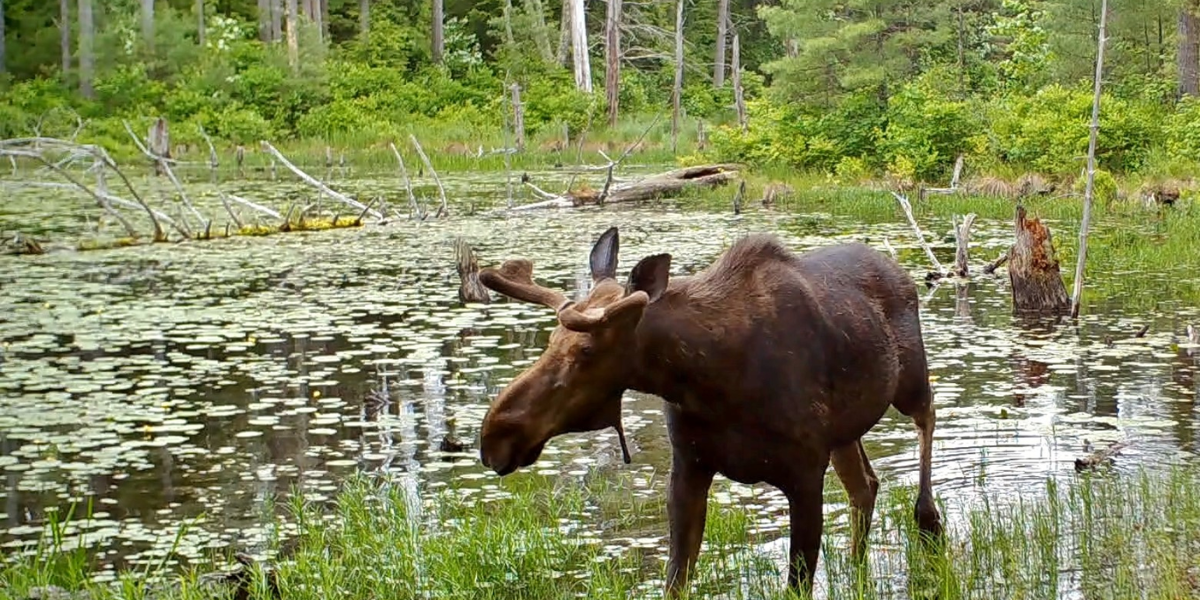
Additionally, the boreal forest plays a crucial role in maintaining the taiga ecosystem and serves as a vital carbon sink.
12 Interesting Animals in the Boreal Forest – (With Interesting Pictures of Boreal Forest Animals)
The boreal forests are home to an interesting array of wildlife, each species uniquely adapted to the challenging northern conditions. In this blog, we have gathered 12 interesting animals in the Boreal Forests.
The American Marten (Martes americana)
The American marten a captivating member of the weasel family, is found in boreal forests across North America. These interesting animals inhabit coniferous and mixed woodlands in countries such as Canada and the United States.
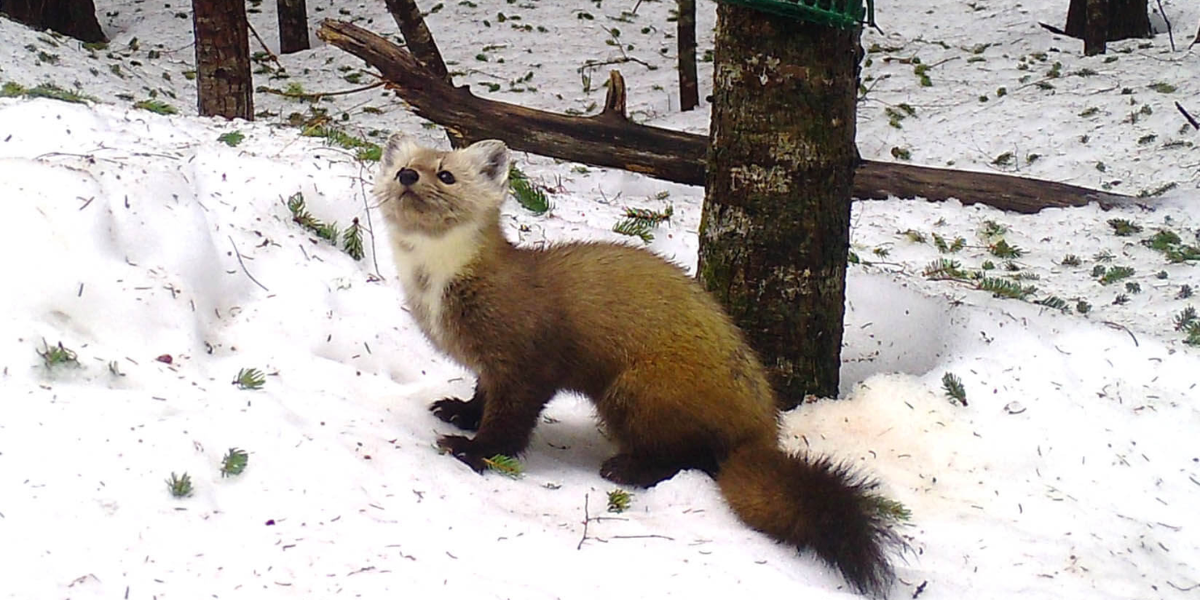
These interesting animals in the boreal forest have sleek, dark brown fur coats and a slender body, and are well-adapted to their natural habitat. They are agile climbers, navigating trees with ease to hunt for their diet, which primarily consists of small mammals, small rodents, birds, and insects.
The best spots to observe American martens are the boreal forests, where their elusive nature and adept tree-climbing skills make them a thrilling sight for wildlife enthusiasts.
On the IUCN red list, the American Marten are listed as “Least Concern,” However, these fascinating animals are facing threats such as habitat loss due to logging and climate change.
Boreal Woodland Caribou (Rangifer tarandus caribou)
Boreal Woodland Caribou, is found in the taiga forest primarily found in Canada, with populations extending into Alaska, Russia, and parts of Scandinavia.
These interesting animals thrive in the vast expanses of the boreal forest, relying on the dense vegetation and coniferous woodlands for cover and forage.
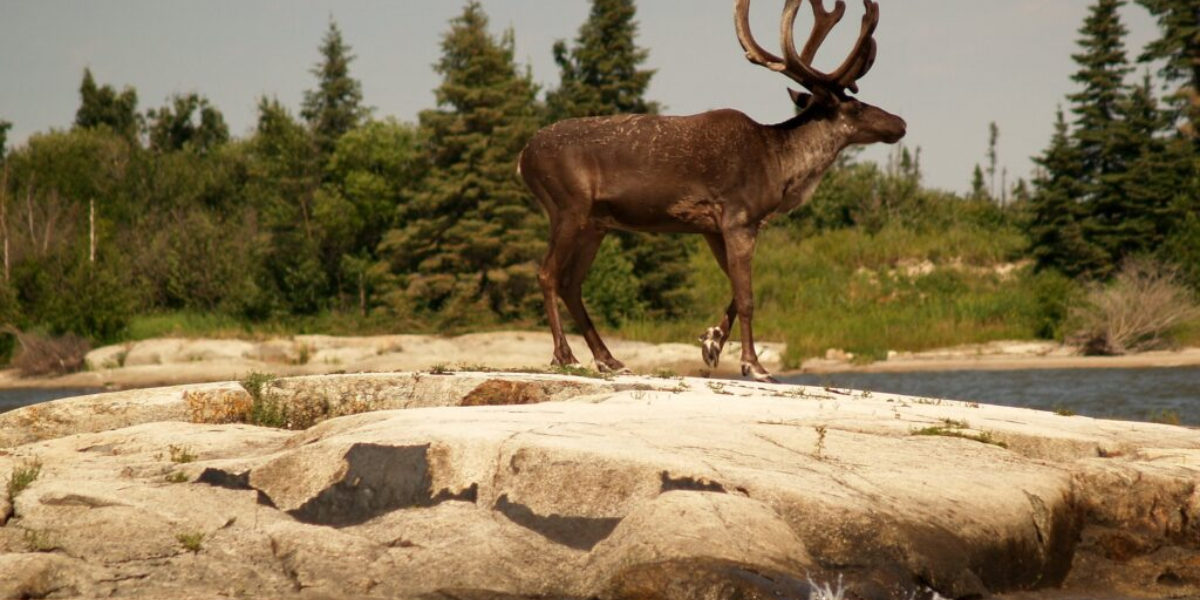
Boreal Woodland Caribou primarily graze on lichens, mosses, and the tender shoots of shrubs, adapting to the seasonal changes in their habitat. The best spots to observe these caribou are within the boreal forests of Canada, where they navigate through the dense vegetation.
The IUCN Red List categorized Boreal Woodland Caribou as “Endangered Species.” Their populations are facing threats from habitat fragmentation due to industrial development, and logging.
Canada Lynx (Lynx canadensis)
The Canada lynx is an interesting animal in the Boreal Forest. These enchanting wild cat species are found primarily in North America, inhabiting boreal forests and mountainous regions. These interesting animals roam in various countries such as Canada, the United States, and Alaska.
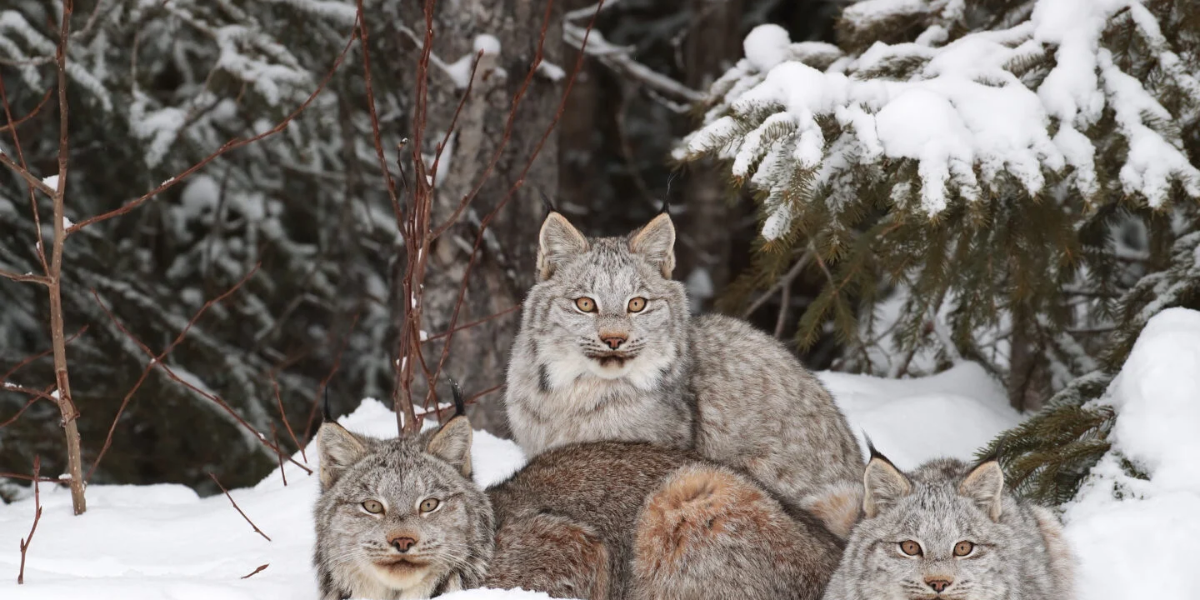
They are known for their tufted ears, thick fur, and large, padded paws, Canada Lynx are superbly adapted to their natural habitat, thriving in dense coniferous forests.
Their diet primarily consists of snowshoe hares, a relationship that fluctuates with hare populations. The best spots to observe Canada Lynx are within the boreal forests of Canada and parts of the northern United States.
The IUCN Red List classified Canada lynx as “Least Concern.” However, their populations face threats from habitat loss, climate change affecting prey availability, and human activities.
Snowshoe Hare (Lepus americanus)
The Snowshoe Hares are interesting animals in the boreal forest. They can be found in several countries, including Canada, the United States, and parts of Northern Europe and Asia.
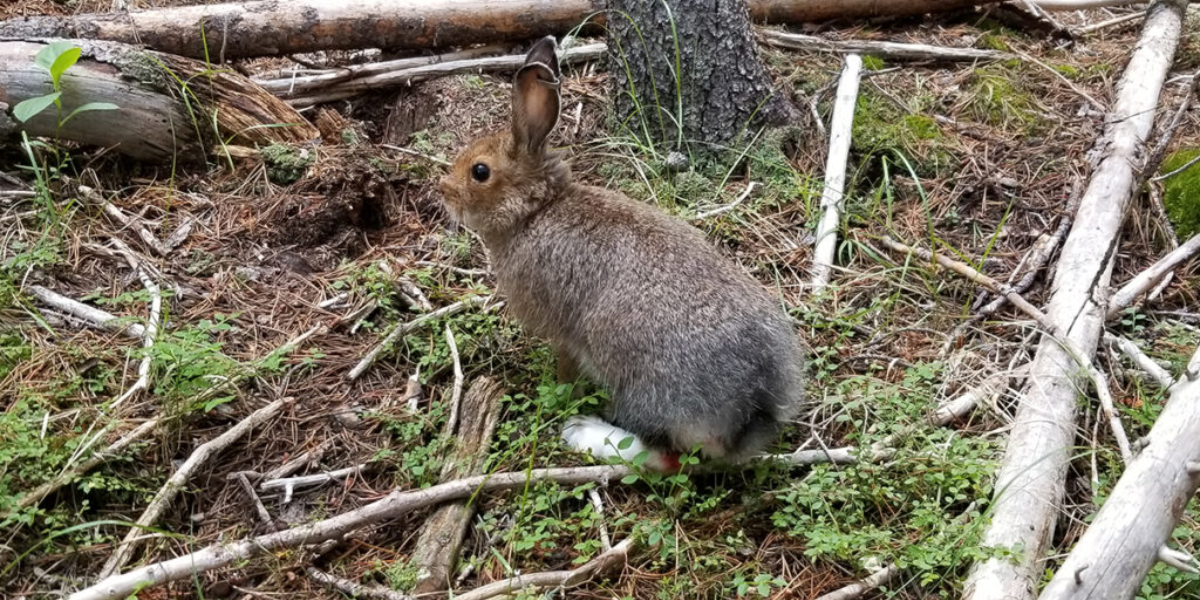
These small, elusive hares are well-adapted to their natural habitat, characterized by dense coniferous forests, and temperate forests where their fur changes color seasonally from brown in the summer to white in the winter, providing effective camouflage.
Snowshoe Hares primarily feed on the bark, twigs, and buds of woody plants, showcasing a diet well-suited to boreal forest ecosystems. The best spots to observe these interesting animals are in dense coniferous or mixed wood forests, where they thrive.
On the IUCN red list, these snow hares are classified as “Least Concern.” However, their population is facing some major threats such as habitat loss due to logging and climate change.
Wood Frogs (Rana sylvatica)
Wood Frogs are interesting animals inhabiting the boreal forests of North America, including Canada, the United States, and parts of Alaska. These amphibians are well-adapted to cold climates and are known for their remarkable ability to survive freezing temperatures during hibernation.
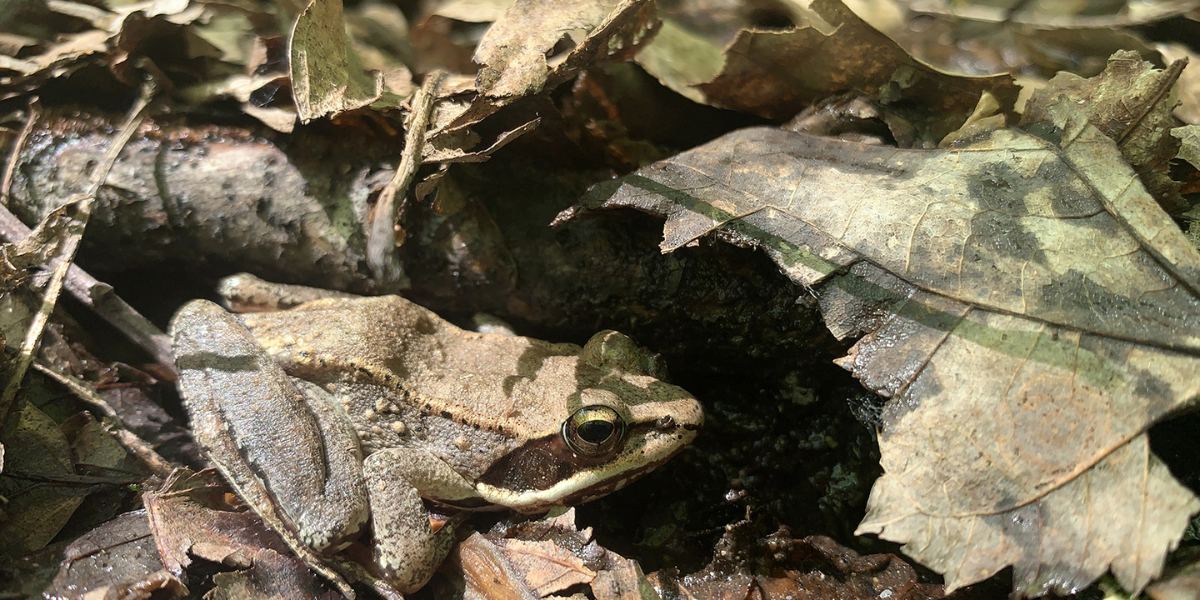
Wood Frogs thrive in moist environments like woodland pools, bogs, and ephemeral ponds, where they breed and lay eggs. Their diet primarily consists of insects, spiders, and small invertebrates.
Nature- enthusiasts can spot Wood Frogs in shaded areas near water sources during the breeding season in spring.
Despite their adaptability, Wood Frogs are facing threats to their population due to habitat loss, pollution, and climate change. While they are currently listed as “Least Concern” on the IUCN Red List.
Brown Bears (Ursus arctos)
Brown bears are interesting animals that call the boreal forest home. These interesting animals primarily inhabit the boreal forests, mountain ranges, and tundra regions of North America, Europe, and Asia.
These interesting animals in the boreal forest are robust mammals, also found in countries such as Canada, Russia, Finland, and parts of Scandinavia.
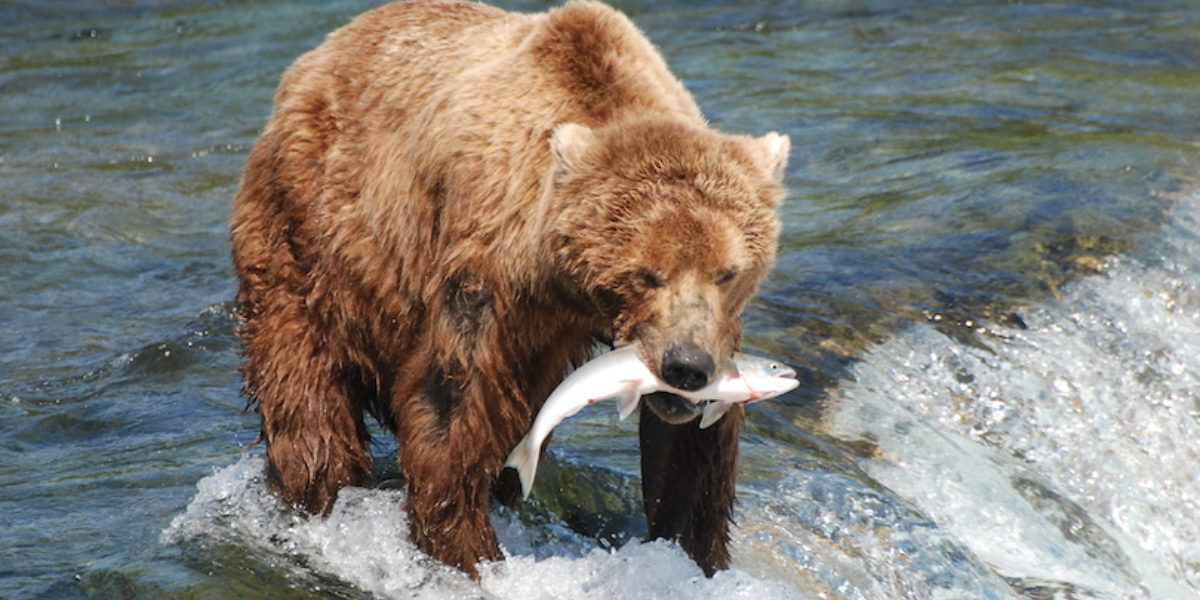
Brown bears are known for their adaptable nature, brown bears thrive in diverse ecosystems, showcasing their ability to inhabit coastal areas, dense woodlands, and open plains. Their omnivorous diet includes a wide range of foods, from berries and plants to fish and small mammals.
Wildlife enthusiasts can spot these interesting animals in the remote wilderness of Alaska, the boreal forests of Scandinavia, and the Kamchatka Peninsula in Russia.
Despite their widespread presence, their population is facing conservation challenges, and on the International Union for Conservation of Nature (IUCN) Red List the brown bears are classified as “Least Concern.” However, ongoing threats such as habitat loss, climate change, and conflicts with humans pose risks to their populations.
Moose (Alces alces)
Moose is an interesting animal species found in the boreal forest, and are renowned for their impressive size and distinctive antlers. They predominantly inhabit the boreal region and mixed wood forests of North America, Europe, and Asia.

These majestic creatures are commonly found in countries such as Canada, Sweden, Norway, Russia, and the United States. Their natural habitats consist of dense forests, wetlands, and areas with abundant aquatic vegetation.
Moose are herbivores with a diet primarily composed of woody plants, aquatic vegetation, and shrubs. The best spots to encounter moose are often near lakeshores, marshes, and riverbanks where they graze on aquatic plants.
Despite their robust nature, moose face threats that have led to a “Vulnerable Species” status on the IUCN Red List. These interesting animals in the boreal forest are facing some major threats such as climate change, habitat loss due to logging, and increased predation.
Beavers (Castor)
Beavers, fascinating animals in the boreal forest, are widely distributed across North America, Europe, and Asia. Their natural habitats include lakes, rivers, and ponds, where they build dams, also known as Beaver Dams, using branches, mud, and stones.
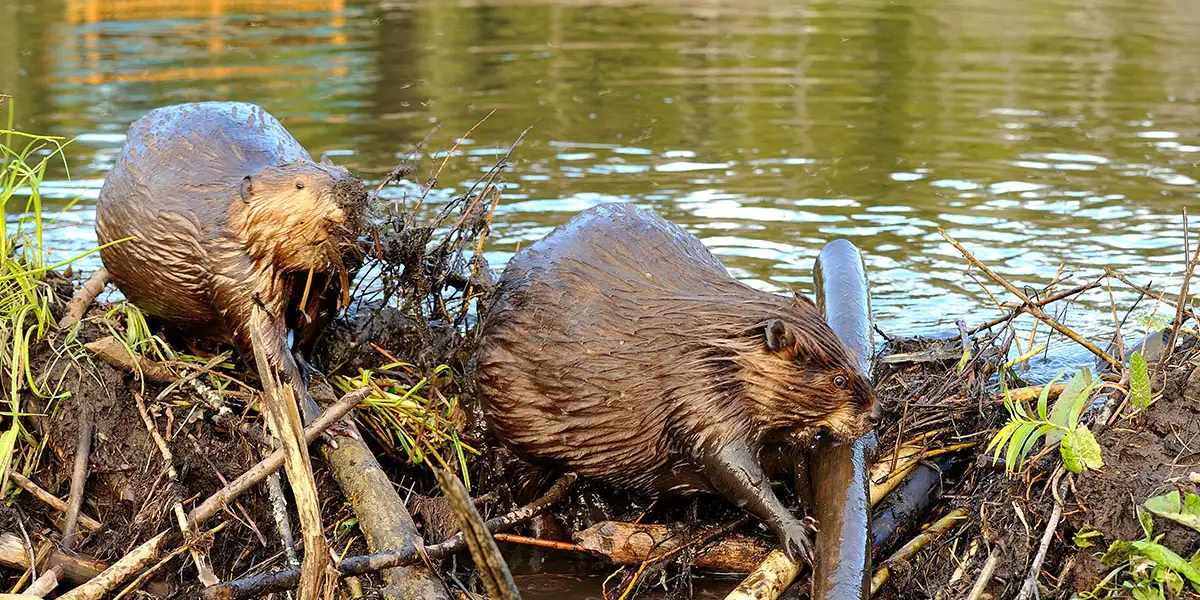
These industrious creatures play a crucial role in shaping their environment, creating wetlands that benefit numerous species. Beavers are herbivores, primarily feeding on tree bark and aquatic plants, showcasing a remarkable ability to alter landscapes for their nutritional needs.
The best spots to observe these interesting animals are wooded areas near water bodies, where their impressive engineering projects are evident. On the IUCN red list of threatened species, these Beavers are listed as “Least Concern.”
Despite their importance, beavers face challenges, with some populations experiencing threats such as habitat loss, pollution, and climate change.
Interesting Bird Species in the Boreal Forest
The boreal forest is home to a diverse array of interesting bird species, contributing to the boreal region’s rich biodiversity. Among these, the Spruce Grouse is an interesting bird species, showcasing remarkable adaptations to its coniferous habitat.
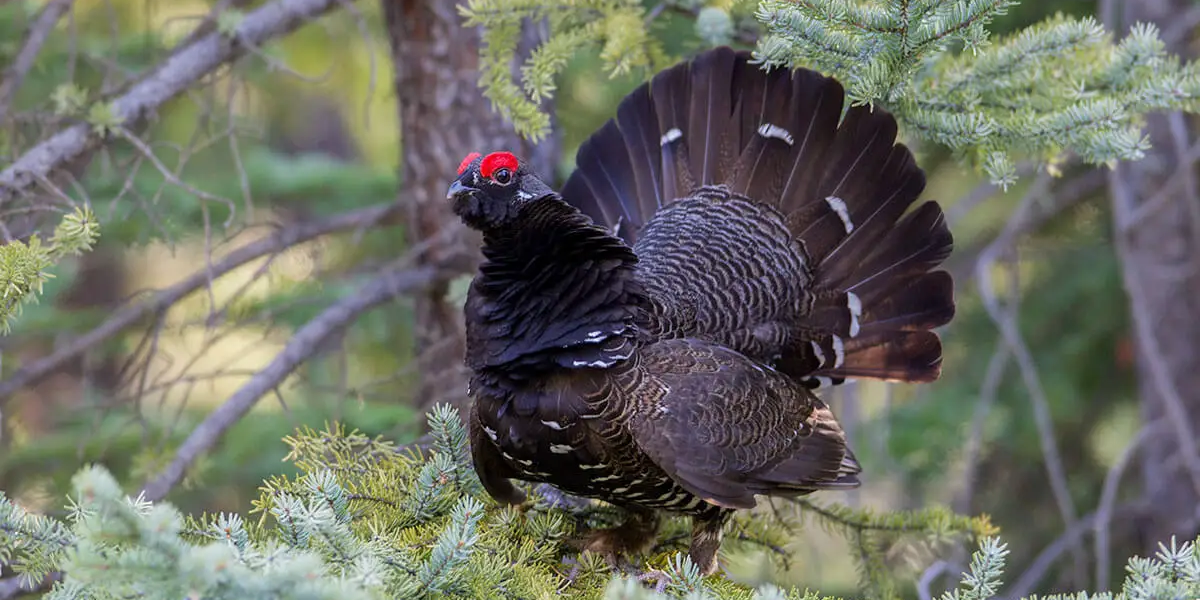
The spruce grouse can be recognized by its mottled plumage and ability to thrive in dense evergreen forests. The Black-backed Woodpecker, with its distinctive black plumage, is another noteworthy boreal forest inhabitant, contributing to ecosystem health by foraging on bark beetles.
Moreover, apart from these interesting birds, there are many other captivating and interesting animals in the Boreal Forest that are worth exploring, some of them are given below.
Great Gray Owls (Strix nebulosa)
The Great Gray Owls are interesting animals in the boreal forest, that inhabit the northern regions of North America, Europe, and Asia. These owls are known for their impressive size and distinctive facial disc, these owls thrive in dense coniferous forests, particularly favoring habitats with a mix of open areas and large trees.
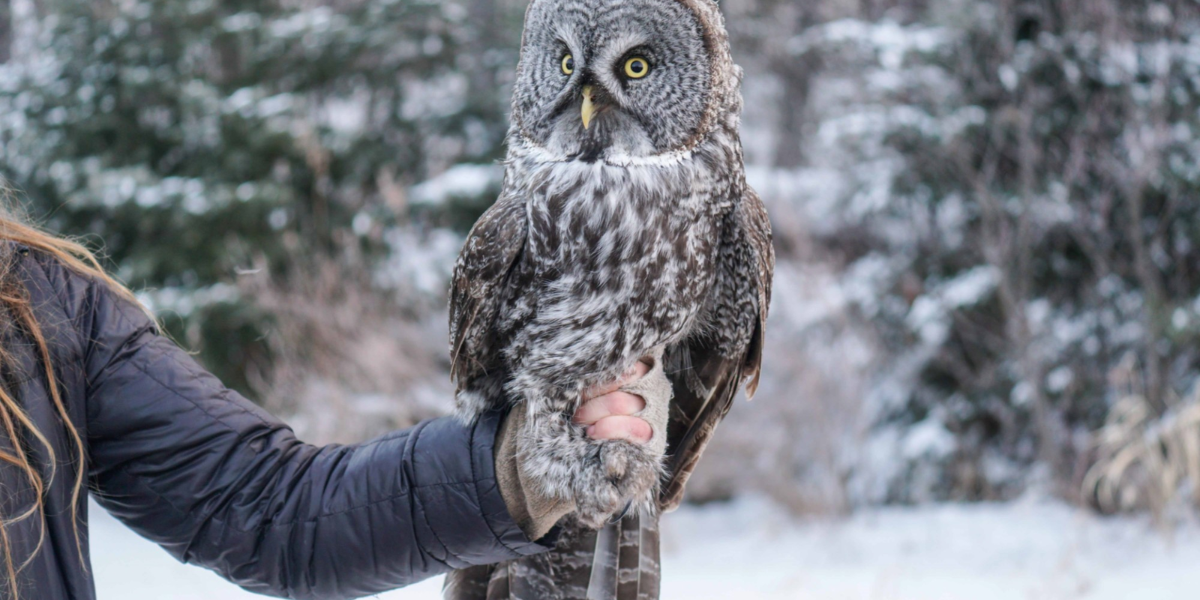
Their diet primarily consists of small mammals, with a particular focus on voles and other rodents. Ideal spots to find Great Gray Owls include the boreal forests of Canada, Scandinavia, and Russia where their cryptic plumage helps in camouflage.
Currently, the International Union for Conservation of Nature (IUCN) listed them as “Least Concern,” reflecting their relatively stable populations. However, these interesting animals in the boreal forest face threats such as habitat loss due to logging and climate change
Great Horned Owl (Bubo)
Great Horned Owls, as interesting animals in the boreal forest, are widespread across North and South America, inhabiting diverse environments from arctic tundra to tropical rainforests. These adaptable raptors are known for their large size, prominent ear tufts, and distinctive hooting calls.

Found in countries such as the United States, Canada, Mexico, and parts of Central and South America, Great Horned Owls thrive in a variety of ecosystems. Their diet encompasses a broad range of prey, including mammals, birds, and even other raptors, making them formidable hunters.
The boreal forest serves as a suitable habitat, offering ample roosting and nesting sites among the tall trees. On the IUCN red list, these great horned owls are listed as “Least Concern,” however, their populations are facing localized challenges such as habitat destruction, pollution, and persecution.
Black-Capped Chickadees (Poecile atricapillus)
The Black-capped Chickadees are one of the most interesting animals in the boreal forest and are widely distributed across North America. These interesting animals inhabit a range that spans from Alaska to the northern United States and into Canada.
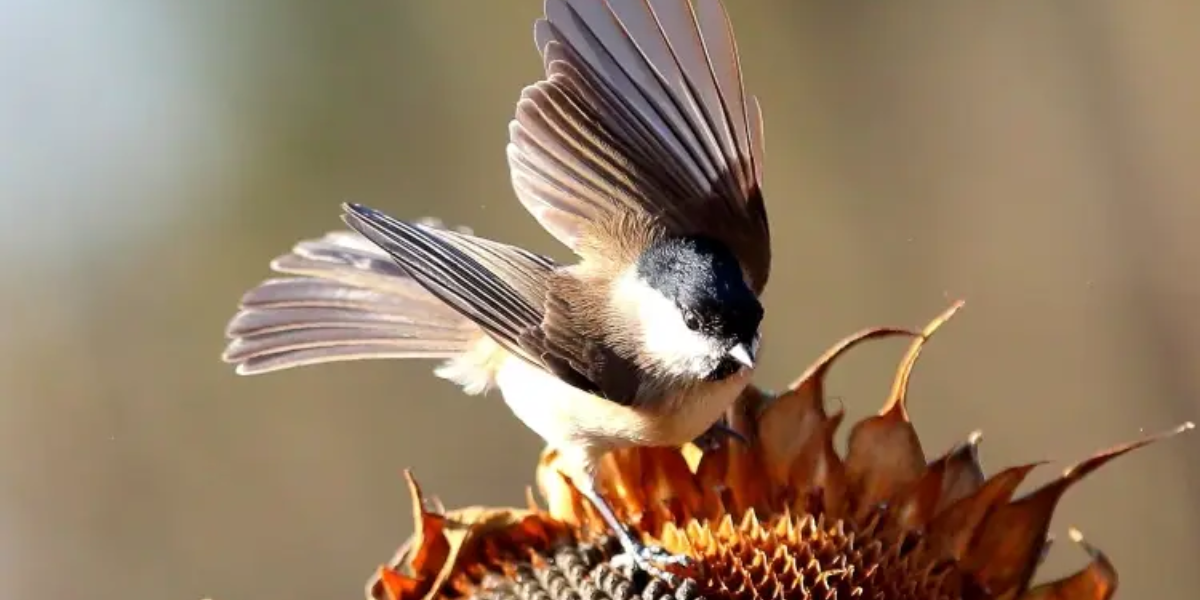
These charming birds are commonly found in mixed and deciduous forests, displaying a remarkable adaptability to various woodland environments.
The Black Capped Chickadees are recognized for their distinctive “chick-a-dee-dee-dee” call, these social birds have a diverse diet that includes insects, seeds, and berries.
Some of the best spots to encounter Black-capped Chickadees are wooded areas with a mix of coniferous and deciduous trees, where they forage for food and seek refuge in tree cavities.
Fortunately, these resilient birds are currently listed as species of “Least Concern” on the IUCN Red List, indicating their stable population. However, like many boreal forest inhabitants, they face threats from habitat loss due to logging and climate change.
Wild Boar
The wild boar, scientifically known as Sus scrofa, is a sturdy mammal belonging to the Suidae family, widely distributed across Europe, Asia, and North Africa. These adaptable creatures thrive in a variety of habitats including forests, grasslands, marshes, and agricultural areas.
With an omnivorous diet, wild boars forage for plant matter, roots, tubers, insects, small vertebrates, and carrion, utilizing their keen sense of smell and strong tusks for efficient feeding.
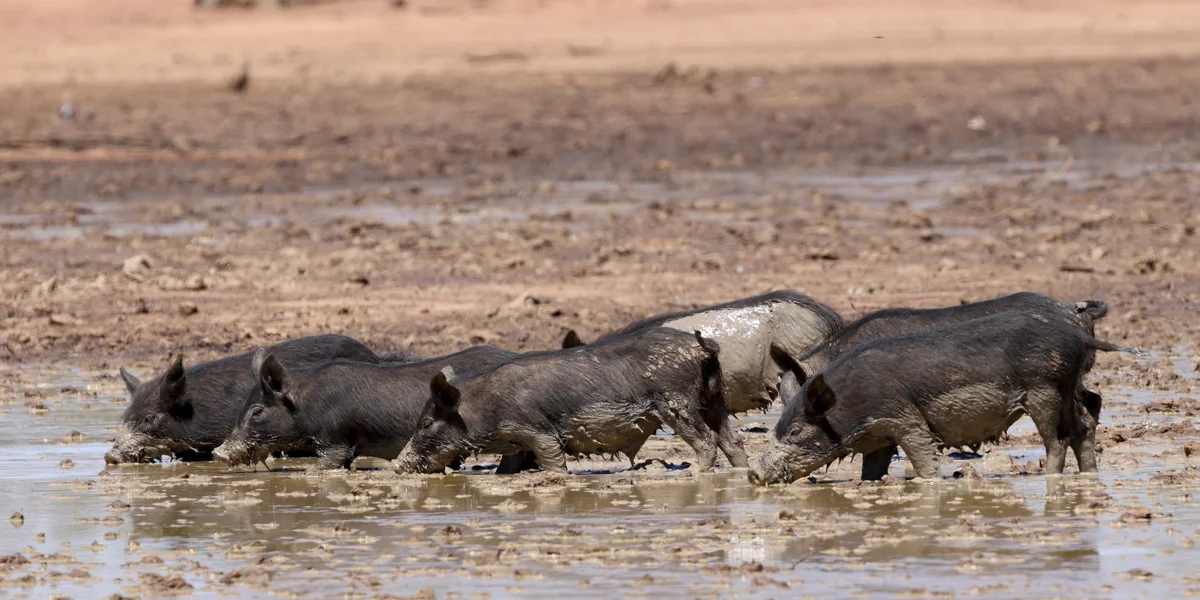
The breeding season for wild boars typically occurs in late autumn and early winter. During this period, males engage in intense competition for mating rights with females, displaying aggressive behaviors and vocalizations to establish dominance.
Female wild boars, or sows, give birth to litters of piglets following a gestation period of approximately three to four months. Their population is facing some major threats due to habitat loss, habitat fragmentation, hunting pressure, and disease transmission.
Frequently Asked Questions about Interesting Animals in the Boreal Forest
What are 4 animals in a boreal forest?
Moose, Caribou, Grizzly bear, and Wolverine are 4 interesting animals in the Boreal forest.
What are the 3 dominant animal species in the boreal forest?
Elks, snowshoe hares, and beavers are the 3 most dominant animal species in the boreal forest.
What are the 3 primary consumers in the boreal forest?
Rabbits, voles, and caribou are the 3 primary consumers in the Boreal Forest.
What is the rarest animal in the taiga?
Siberian Tigers are the rarest animal in the Taiga.
What are 4 animals in boreal forest?
Black bears, Moose, Gray wolf, and Beaver are 4 interesting animals the boreal forest.
What are the 3 dominant animal species in the boreal forest?
The predominant species within the boreal forest are wolves, white wolves and beavers, black bears, yellow perch, pikeperch, and numerous shorebird birds, songbirds, or predators. The boreal forests are also a crucial habitat for endangered wildlife, including wood caribou and wood bison.
- 12 Interesting Animals in Dominican Republic - 2024-05-02
- 8 Common Dangerous Animals in Yosemite - 2024-05-01
- 11 Interesting Animals in the Midwest - 2024-05-01


